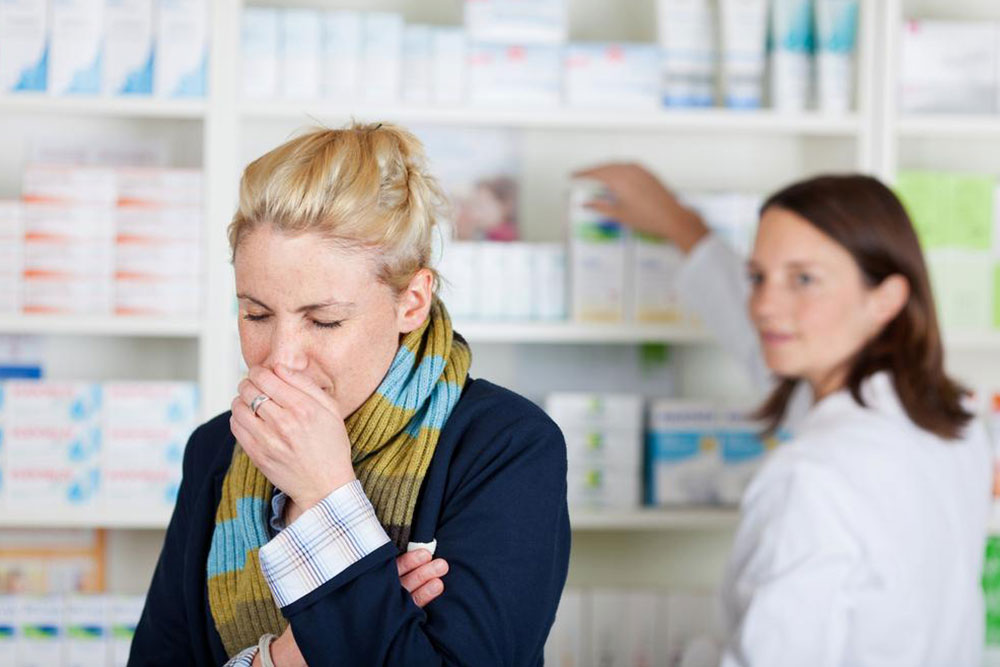Symptoms and Treatment Methods for Pneumonia
Pneumonia is the infection caused in one or both the lungs. It can be caused due to viruses, fungus, or bacteria. The disease causes your lungs to be filled with fluid or pus, thus making it difficult to breathe. The symptoms that you might experience for pneumonia are coughing with mucus, sweating and chills, shortness of breath, and chest pain. Pneumonia can be caused due to germs or location and the treatment of each disease depends on a variety of factors.

Symptoms of pneumonia
- The symptoms of pneumonia essentially vary from being mild to severe. It also depends on your age as well as health. The most common symptoms of pneumonia include mild or high fever, shaking chills, cough, and falling short of breath while doing hectic activities.
- Some other additional symptoms of pneumonia can also include a stabbing chest pain that gets worse when you are breathing heavily. You might experience a headache, a very clammy skin, and excessive sweating in some cases. Your doctor will recommend the correct treatment for pneumonia based on your symptoms and diagnosis.
- When the condition gets worse you might feel a loss in your appetite and in energy accompanied by fatigue. Older people might also experience confusion. As pneumonia can be bacterial and viral, the associated symptoms also vary accordingly.
- In case you have bacterial pneumonia, your temperature might go as high as 105 degrees Fahrenheit. This type of pneumonia is known to cause sweating and a rapid increase in the pulse rate and breathing. Due to the lack of oxygen, the lips and nail beds can turn blue. The patient might also feel a loss of focus.
- When it comes to viral pneumonia, the symptoms are similar to influenza. Feeling weak, headache, dry cough, and muscle pain are some of the signs of viral pneumonia. Within the duration of 2 to 3 days, you can feel breathless and the cough becomes even worse. The blueness of lips accompanied by high fever is also common. Identifying the type of pneumonia is the key to the treatment for pneumonia.
- If you have any of these symptoms, you should definitely consult your doctor at once. People who are regular smokers, those with cerebral palsy, and recent surgery or trauma are known to be at greater risk than others.
Treatment of pneumonia
- There are several treatment options for pneumonia and the most common type is the one which is prescribed. Medication that is antiviral, antifungal, and antibiotic is used to treat pneumonia. In most cases, antibiotics are used for the treatment for pneumonia. Your doctor might recommend OTC medication to get rid of pain and fever. You will most likely be given cough medicines as well to remove the fluids from your lungs.
- Another way of treating pneumonia is via home treatment. This is done in order to avoid the recurrence of the disease. Home treatment might include taking the prescribed medication on time to completely cure the disease, drinking a lot of fluids, getting plenty of rest, and not getting exerted by doing a lot of tasks and physical activity. It should be noted that recovering from pneumonia takes time and you should certainly take some time out to relax and heal before resuming the normal schedule.
- Lastly, if the situation is worse, then you will have to get hospitalized. While at the hospital, the doctors can monitor your temperature, breathing, and heart rate. There are several methods using which the treatment for pneumonia will be given. Intravenous antibiotics are administered to you and other techniques like respiratory therapy are also used. According to this therapy, a lot of specific medications are delivered directly to the lungs. You might also be taught some breathing techniques that maximize the oxygenation.
- Oxygen therapy is also one of the treatments that are done for pneumonia. This helps in maintaining the level of oxygen in your bloodstream. You may receive oxygen through a mask or a nasal tube. Some people might also need a ventilator if the condition gets worse.
Pneumonia can also turn out to be serious and can pose a serious threat to your health. With the right diagnosis and treatment, you can cure the disease. However, it is always preferred that you prevent pneumonia to save yourself the ordeal of going through it. If you are a regular smoker then you should consider quitting. Smoking makes you susceptible to respiratory infections in general. You should also wash your hands regularly and cover your mouth while sneezing or coughing. Other ways of preventing the disease could be by maintaining a good lifestyle and eating healthy to build a strong immune system.